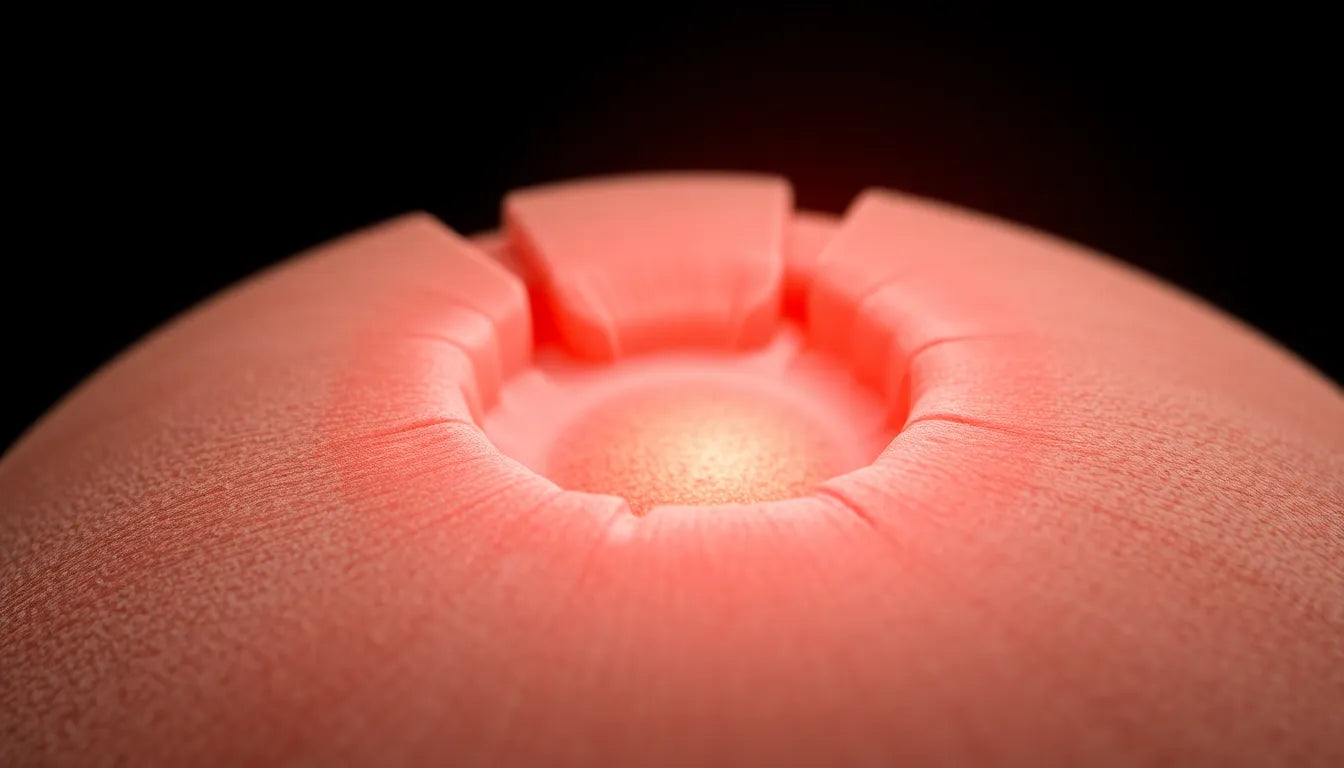Experiencing sciatica during pregnancy is a common concern that affects many expectant mothers, especially as they progress into the second and third trimesters. Sciatica, characterized by pain that radiates along the sciatic nerve from the lower back down to the legs, can be particularly troublesome during this time. Understanding the reasons behind its prevalence during pregnancy is crucial for managing and alleviating discomfort effectively.
Understanding sciatica in pregnancy
The occurrence of sciatica during pregnancy can be attributed to several physiological changes. One primary factor is the hormone relaxin, which increases during pregnancy to allow the pelvis to expand in preparation for childbirth. While this hormone is essential, it also causes the ligaments to loosen, potentially leading to instability and pressure on the sciatic nerve. Additionally, as the pregnancy progresses, the growing uterus shifts the body's center of gravity, which can further strain the lower back and contribute to sciatic pain.
Furthermore, the position of the fetus can play a significant role in exacerbating sciatica symptoms. As the baby grows, its position may press against the sciatic nerve, intensifying the discomfort. These factors combined make sciatica a common issue, particularly in the later stages of pregnancy.
The challenge of managing sciatica
Managing sciatica during pregnancy involves a delicate balance between alleviating pain and ensuring the safety of both the mother and the developing baby. While sciatica often resolves naturally after childbirth, the interim period can be challenging, necessitating safe and effective relief strategies. It is essential to explore non-pharmacological options that provide comfort without compromising the health of the mother or child.
Pregnant individuals frequently seek relief through methods that do not involve medication, given the potential risks associated with certain drugs during pregnancy. This approach underscores the importance of finding alternative solutions to manage pain and improve quality of life during these crucial months. As we delve deeper into this topic, we will explore a range of strategies that can offer significant relief while maintaining safety for both mother and child.
Causes and risk factors of sciatica in pregnancy
The development of sciatica during pregnancy is intricately linked to several physiological and anatomical changes that occur as the body adapts to support a growing baby. A significant factor is the increased production of the hormone relaxin, which plays a crucial role in preparing the pelvis for childbirth by loosening ligaments. While this process is essential, it can inadvertently lead to instability in the pelvic region, increasing the likelihood of pressure on the sciatic nerve.
Additionally, as the uterus expands, the center of gravity shifts forward, altering posture and placing additional strain on the lumbar spine and surrounding muscles. This shift can exacerbate tension on the sciatic nerve, leading to the characteristic pain experienced during pregnancy. Furthermore, insights from the UT Southwestern Medical Center highlight that the fetal position can further contribute to sciatic nerve compression, particularly as the baby grows and moves within the womb.
Recognizing symptoms and the importance of diagnosis
Sciatica during pregnancy often presents with a range of symptoms, including radiating pain from the lower back to the buttocks and down the legs, numbness, tingling sensations, and occasionally, weakness in the affected leg. These symptoms can vary in intensity and may be mistaken for other types of back pain, making accurate diagnosis crucial.
While most cases of sciatica do not require imaging, particularly if the symptoms align with typical pregnancy-related changes, severe or atypical symptoms may necessitate further evaluation. Medical professionals can help differentiate sciatica from other conditions and provide guidance on appropriate management strategies.
Safe treatment and relief strategies for sciatica during pregnancy
Managing sciatica during pregnancy requires a focus on safe, non-pharmacological interventions that provide relief without compromising maternal or fetal health. Physical therapy is a cornerstone of treatment, offering exercises and stretches tailored to alleviate sciatic pain. Healthline recommends pregnancy-safe stretches such as the seated piriformis stretch and table stretch, which can help release tension and improve flexibility.
Engaging in non-weight-bearing activities like swimming can also be beneficial, as the buoyancy of water reduces pressure on the joints and spine while promoting gentle movement. These activities not only provide relief but also contribute to overall fitness and well-being during pregnancy.
Home-based modifications for comfort
Simple home-based modifications can significantly impact comfort levels for those experiencing sciatica during pregnancy. Adjusting posture and making ergonomic changes, such as using supportive seating and cushions, can help reduce strain on the lower back. Additionally, alternating between heat packs and cold compresses can offer temporary relief, though it's important to use these with caution, limiting application to short durations to avoid potential risks.
Considerations for pain management
When it comes to medication, acetaminophen is generally considered safe for managing pain during pregnancy, but it should be used under the guidance of a healthcare provider. Nonsteroidal anti-inflammatory drugs (NSAIDs) are typically avoided after 20 weeks of pregnancy due to potential risks to the fetus. For persistent or severe pain, consulting with a healthcare provider is essential to explore safe and effective management options tailored to individual needs.
By understanding the underlying causes and implementing safe, effective strategies, pregnant individuals can find relief from sciatica symptoms while ensuring the well-being of both themselves and their developing baby. As we continue to explore this topic, further insights into additional relief methods and when to seek medical attention will be discussed to provide comprehensive support throughout pregnancy.
Additional relief methods for sciatica during pregnancy
Finding effective relief from sciatica during pregnancy often involves exploring a variety of methods that cater to individual comfort and safety. Beyond physical therapy and home-based modifications, additional strategies such as massage and aquatic therapy can provide significant benefits.
Massage and aquatic therapy
Massage therapy is a popular choice for alleviating tension and improving circulation, which can help reduce sciatic pain. Prenatal massage, specifically, is tailored to address the unique needs of pregnant individuals and can safely target areas of discomfort without causing harm to the mother or baby. It is important to consult with a trained prenatal massage therapist to ensure techniques are appropriate and safe.
Aquatic therapy, or exercising in water, is another effective method for managing sciatica during pregnancy. The buoyancy of water supports the body, reducing the strain on the joints and spine, which can be particularly beneficial for those experiencing sciatic pain. Activities such as water aerobics or simply walking in a pool can promote gentle movement and provide relief.
Rest and activity balance
While rest is essential for recovery, prolonged inactivity can exacerbate sciatica symptoms. It is important to find a balance between rest and activity. Gentle exercises, such as walking or stretching, can help maintain mobility and prevent stiffness. Listening to your body and avoiding overexertion is key to managing sciatica effectively during pregnancy.
When to seek medical attention
While sciatica during pregnancy is typically a temporary condition that resolves post-delivery, there are scenarios where medical evaluation is necessary. It is crucial to seek medical attention if symptoms become severe or worsen, if there is significant leg weakness, or if there is a loss of bladder or bowel control. These symptoms may indicate a more serious condition that requires prompt medical intervention.
Conclusion
Managing sciatica during pregnancy involves a combination of safe, non-pharmacological strategies that provide relief while ensuring the well-being of both the mother and the developing baby. By exploring various methods such as physical therapy, massage, aquatic therapy, and home-based modifications, pregnant individuals can find effective ways to alleviate discomfort. It is important to consult healthcare providers to tailor these strategies to individual needs and ensure safety throughout pregnancy.
Frequently Asked Questions
What is the main cause of sciatica during pregnancy?
The primary causes of sciatica during pregnancy include hormonal changes, increased weight, and fetal position, which can all contribute to pressure on the sciatic nerve.
Can sciatica affect labor or delivery?
Generally, sciatica does not impact labor or delivery and typically resolves after childbirth.
Are there any exercises to avoid during pregnancy if I have sciatica?
It is advisable to avoid high-impact activities and consult with a physiotherapist for personalized exercise recommendations.
Is it safe to use heat packs during pregnancy for sciatica relief?
Yes, heat packs can be used for relief, but they should be applied with caution, ensuring moderate temperature and limited duration to prevent overheating.
When should I consult a doctor for sciatica during pregnancy?
If you experience severe pain, leg weakness, or loss of bladder or bowel control, it is important to seek medical advice promptly to rule out any serious conditions.
Sources
- UT Southwestern Medical Center. "Sciatica During Pregnancy: Causes and Treatments."
- WebMD. "Sciatica During Pregnancy."
- Cleveland Clinic. "Sciatica: Symptoms, Causes, and Treatment."
- Healthline. "Sciatica During Pregnancy: Symptoms and Exercises."
- Walnut Hill OB/GYN. "Relieving Sciatic Pain During Pregnancy."
- Advanced Pain Care. "Managing Sciatica Pain During Pregnancy."
- HSSH Health. "Home Remedies for Sciatica During Pregnancy."


















